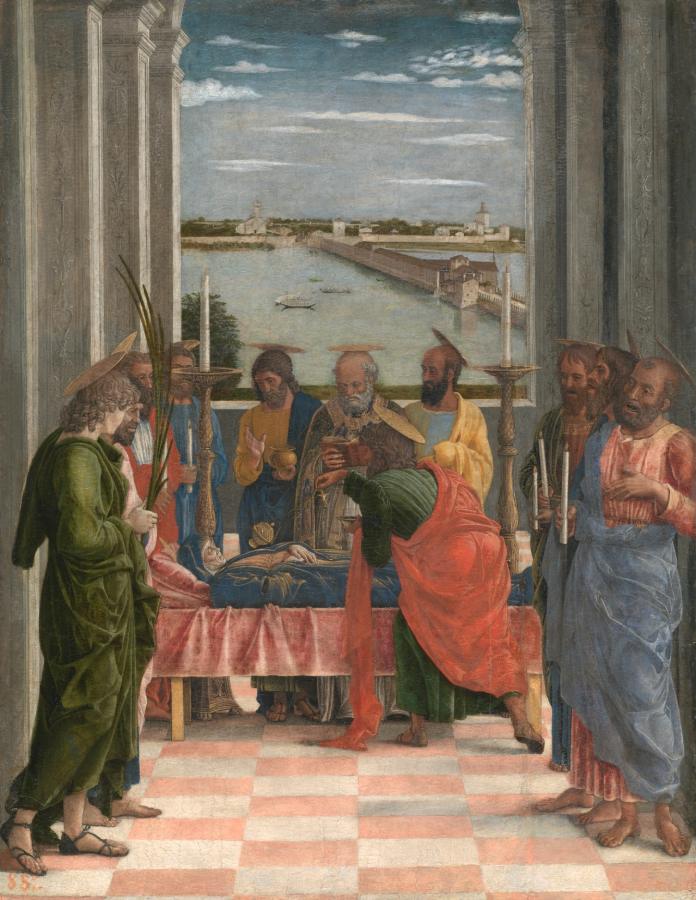Mantegna, Andrea (c.1431-1506)
Morte della Vergine (Death of the Virgin)
c.1462
Oil on wood, 54.5 x 42 cm
Museo del Prado, Madrid
The Virgin Mary lies on her deathbed, surrounded by eleven Apostles. Through the window, the Borgo di San Giorgio and the Laguna of Mantua can be seen in the background. This scene depicts the Virgin Mary’s final moment on earth. According to the Apocrypha, her body and soul were carried up to Heaven by Jesus following her earthly death. This moment is also known as the “Dormition of the Virgin”. The composition is dominated by the search for perspective, which is achieved mostly through the geometric pattern of the flooring, the scaling of the figures and the window in the back, which acts as a “vanishing point”. Also remarkable here is the strong individualization of the characters’ physiognomies and the masterful rendering of the landscape. Indeed, this is one of the first Italian paintings with a recognizable topography. The scene is derived from a mosaic in San Marco of Venice designed by Andrea del Castagno, and from the vaulted architecture visible in drawings by Jacopo Bellini, the painter’s father in law. Mantegna entered the service of the Gonzaga family of Mantua in 1549 and this work was painted for them. The upper third is missing, but a part of it, Christ Receiving the Virgin, is at the Pinacoteca Nazionale in Ferrara. This work was acquired for Felipe IV (1605-1665) at the auction of King Charles I of England. It entered the Prado Museum in 1829. (MNP)
